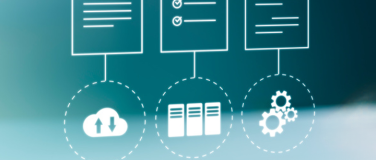MuleSoft’s latest Connectivity Benchmark Report offers a unique insight into the challenges organizations face as they continue to transform.
Almost three quarters (72%) of customer interactions take place digitally. Added to that, the shift to hybrid work means employees are also switching to digital channels and demanding the same type of connected experiences that they enjoy in their personal lives.
What does API-led connectivity look like in 2022?
With so many interactions taking place online, expectations for integrated digital experiences are constantly on the rise. However, organizations are finding it increasingly difficult to keep up. With more digital interactions than before, IT teams need to support an astounding number of applications while harnessing a growing volume of data to deliver the connected experiences their users expect.
IT teams are overburdened
To add to their plight, IT teams are immensely overloaded, being asked to deliver 40% more projects than in years prior – yet most are failing to complete them on time. Faced with an explosion of apps and data and an array of overworked developers on the frontlines of digital transformation, organizations are losing the battle, leading to disconnected user experiences.
To survive in today’s competitive market, they need a new approach to integration – one that allows them to harness data to provide seamless user experiences, digitally transform faster, and benefit from improved business outcomes.
There’s adversity among applications
Applications are at the heart of digital transformation and are crucial to providing connected user experiences. To enable these experiences for customers and employees, organizations need to act on the data within their applications. But the current lack of integration is holding them back. Very few apps are integrated, which leaves valuable data trapped in silos.
With these hurdles to overcome, it’s unsurprising that integrating user experiences has become an uphill battle for the majority of businesses. IT leaders need to improve their integration strategy to fend off frustrated customers and give themselves a fighting chance in the digital transformation race.
Devising an API-led connectivity strategy
The report also discovered that organizations are increasingly recognizing the significance of the issue with integration. Respondents agree that the biggest challenge to digital transformation is integrating siloed apps and data, and most recognize that integration difficulties are holding back their digital transformation initiatives. Still, many companies remain reliant on outdated approaches such as tightly coupled, point-to-point connections.
Others are embracing more modern tactics, but their strategies are still falling short. As a result, organizations are spending vast amounts of time and money on custom integration, which only increases their technical debt.
Victory by API
By using APIs to connect data and applications, companies can digitally transform sustainably, accelerating business success and delivering seamless user experiences. We are finally beginning to see a united front as more organizations embrace an API-led connectivity strategy.
As more organizations shift to an API-led approach, the burden on IT teams will be reduced; APIs can be reused multiple times in future projects. The composable business that this enables means that organizations can draft in more IT users from across the organization to drive their digital transformation, forming myriad business technologists to contribute toward new projects. The benefits of this strategy are clear, with 40% of organizations seeing revenue growth as a direct result of leveraging APIs.
With a modern strategy that combines integration, API management, and automation, companies can create seamless experiences and new digital capabilities, driving better business outcomes.
Want to learn more? Download MuleSoft’s full 2022 Connectivity Benchmark Report.









